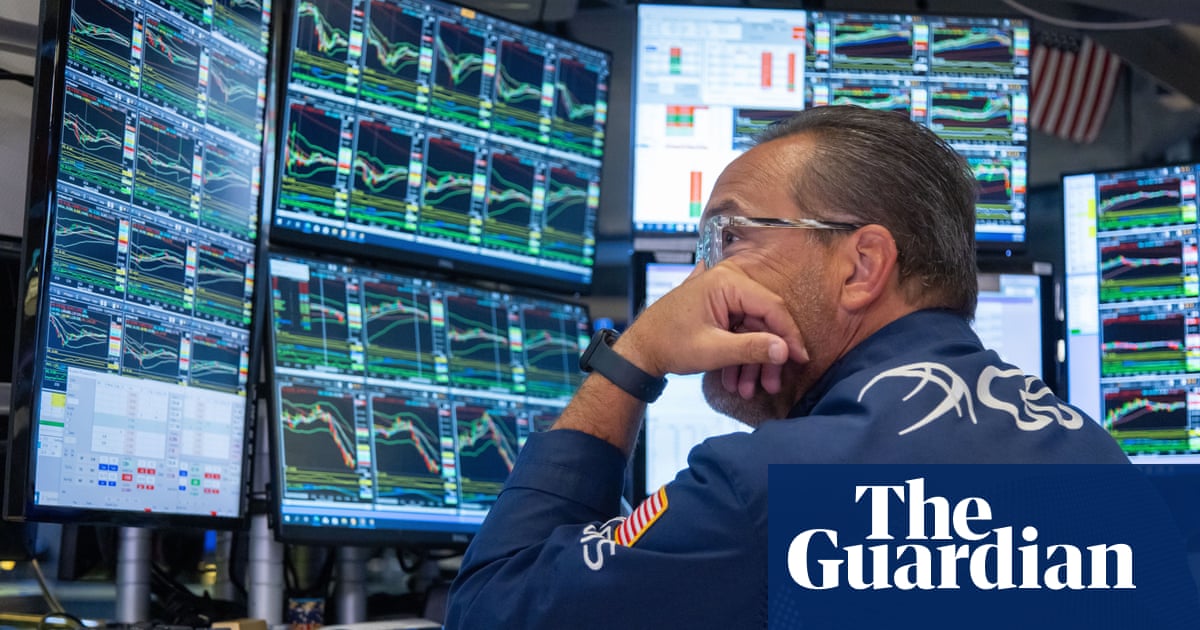Shares on Wall Street have risen and many Asian and European markets staged a recovery after this week’s global stock market rout, but analysts warned: “We might not be out of the woods.”
The FTSE 100 index in London was 40 points, or 0.5%, up by late afternoon on Tuesday, after losing 166 points, or 2%, on Monday, its biggest one-day points drop in more than a year. Germany’s Dax also rose by 0.5% and France’s Cac went up 0.2%, but the Italian bourse slid by 0.4%.
On Wall Street, the Dow Jones edged up by 1.2% in early trading, while the S&P 500 rose by 1.6% and the Nasdaq climbed 1.5%, after Wall Street’s worst day in almost two years on Monday.
The Nikkei 225 index in Tokyo closed 10.2% higher – up 3,217 to 34,675, a record daily points rise – as investors bought into bargains after the 12.4% rout the previous day that triggered a fall in European and US markets. The Nikkei experienced its biggest drop in 37 years on Monday.
Other markets in Asia also recovered after the rollercoaster ride at the start of the week. South Korea’s Kospi index gained about 3%, while Australia’s ASX200 added 0.4% and the Shanghai and Shenzhen markets in China rose by 0.2% and 0.8% respectively.
Hong Kong’s Hang Seng was among a small number of markets that recorded further modest losses, slipping by 0.3%.
“We might not be out of the woods yet,” said Fawad Razaqzada, a market analyst at City Index, “though conditions could stabilise as the week progresses. With a quieter US economic calendar ahead, there will be fewer new recessionary signals to unsettle traders, and the potential for supportive comments from Federal Reserve officials could ease market pressure.”
The dollar gained 0.6% to 144.75 yen, the first day it has traded higher against the Japanese currency this month. However, the dollar could weaken more broadly in the coming days and weeks amid expectations of a sharper pivot by the US Federal Reserve than previously expected, Razaqzada said.
Markets are now expecting the Fed to cut interest rates by 50 basis points at its September meeting, with futures implying an 87% chance of such a big move.
Analysts at Goldman Sachs, led by Peter Oppenheimer, said investors had been growing increasingly complacent, interpreting “bad news as good news”.
They said: “Has the correction gone far enough? At this stage probably not. Valuations have moderated but remain elevated, particularly in the US.”
The week started with a global stock plunge reminiscent of 1987’s Black Monday crash that swept around the world and pummelled Wall Street with more steep losses, as fears worsened about a slowing US economy.
It was the first chance for traders in Tokyo to respond to the global sell-off that began on Friday, after US government figures showed employers slowed their hiring last month by much more than economists expected, while the unemployment rate rose to 4.3%.
after newsletter promotion
It was the latest piece of data on the US economy to come in weaker than expected, raising fears that the Fed has pressed the brakes on the economy by too much for too long through high interest rates in the hope of bringing down inflation.
Fed officials tried to reassure markets on Monday. Its San Francisco president, Mary Daly, said it was “extremely important” to prevent the labour market tipping into a downturn and that she expects interest rates to be cut later this year.
Investors also pointed to the Bank of Japan’s decision last week to raise its main interest rate from almost zero. This helps boost the value of the Japanese yen but it could also force traders to exit deals where they borrowed money for virtually no cost in Japan and invested it in higher-yielding assets around the world. This is known as “carry trades”.
JP Morgan Chase said the recent unwinding in carry trades had further to run as the yen remains one of the most undervalued currencies.
“We are not done by any stretch,” Arindam Sandilya, a co-head of global FX strategy, said on Bloomberg TV. “The carry trade unwind, at least within the speculative investing community, is somewhere between 50% and 60% complete.”

